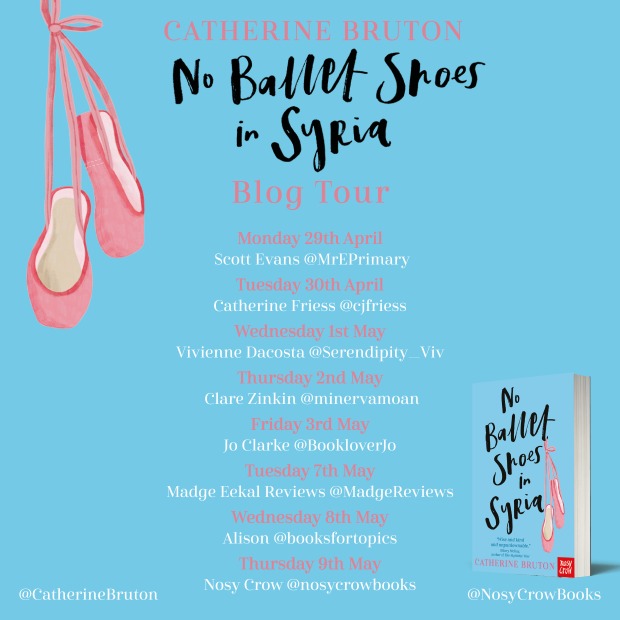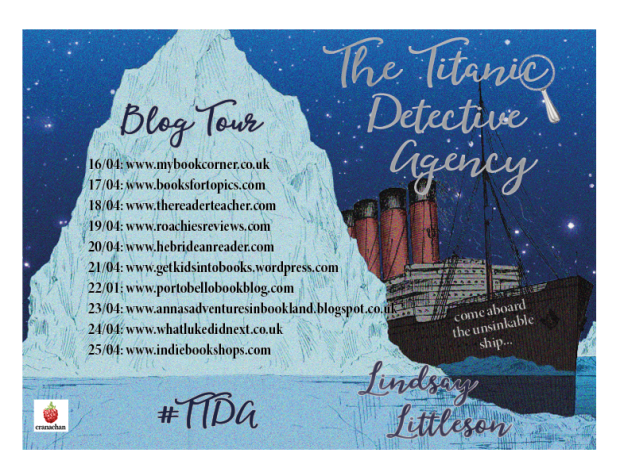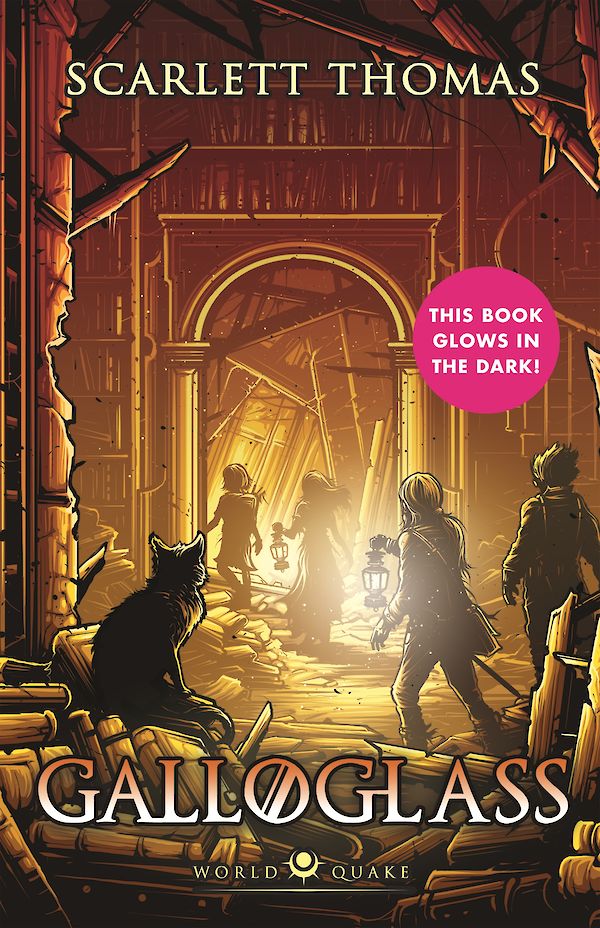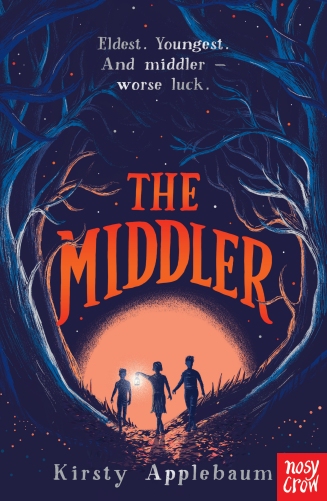
‘This story that needs to be told the world over champions compassion and community in a way that only a few others do so well… This book has changed me, as it will change you. My recommendation for the 2020 Read for Empathy collection.’
Rating: ⭐⭐⭐⭐⭐
Title: No Ballet Shoes in Syria
Author: Catherine Bruton (@catherinebruton)
Cover artwork: Kathrin Honesta
Cover typography: Anneka Sandher
Publisher: Nosy Crow (@NosyCrowBooks)
Page count: 272
Date of publication: 2nd May 2019
Series status: N/A
ISBN: 978-1788004503
Perfect for Year 6 and Year 7.
#3Words3Emojis:
1. Kindness 💗
2. Flashbacks 💬
3. Community 🧑🏽🤝🧑🏽
Aya is eleven years old and has just arrived in Britain with her mum and baby brother, seeking asylum from war in Syria.
When Aya stumbles across a local ballet class, the formidable dance teacher spots her exceptional talent and believes that Aya has the potential to earn a prestigious ballet scholarship.
But at the same time, Aya and her family must fight to be allowed to remain in the country, to make a home for themselves, and to find Aya’s father – separated from the rest of the family during the journey from Syria.
Review: Aya is eleven years old, sitting in her local community centre and is easily distracted by the music she can hear. Sounds a little bit normal, right? However, she’s also in a place most eleven years old wouldn’t find themselves in. Having escaped from war-torn Aleppo in Syria, she is waiting for a moment that could change her life. The moment when she’s granted safe haven in a country she’s only been in for three weeks. Unbeknownst to her, this may take more time than she thinks…
Holding her baby brother, looking after her mother and with no idea of where her father is, she sits opposite her case worker with the weight of the world and full responsibility falling on her small shoulders. As the story progresses, we come to learn that Aya hasn’t arrived in this country straightforwardly. In fact, her journey to get here has been arduous, tiring, painful and one that’s been physically, mentally and emotionally draining from start to finish… and it’s not quite finished yet.
To some, community centres might not be a source of inspiration but to Aya, this is where she finds a source of unexpected comfort. Hearing the familiar bars and notes of the piano and the French language brings Aya back home to Syria and brings back memories of happier times when she used to dance. Feeling this, she longs to dance and it is only when ballet dance class teacher Miss Helena encounters Aya dancing to a tune of her very own that she asks Aya to join the class, offering at least some small hope to her.
Throughout the dance class, Aya doesn’t only find a group of girls that she begins to call her friends but she also begins to find herself. Led by a teacher who (for me, is my favourite character) sees Aya’s natural talent, embodies kindness and has her very own story to tell, Miss Helena suggests that Aya should go for a prestigious scholarship – one that could have significant and life-changing consequences for Aya and her family if she can achieve it.
Combining flashbacks of Aya’s time in Syria with her story of living in the UK, this powerful, multi-layered story champions compassion and the spirit of community in a way that few others stories do so well – and as such, it is my recommendation for the 2020 Read for Empathy collections collated by EmpathyLabUK. Even though it is raw, very real, personal and heart-wrenching throughout, it’s told with hopefulness, humanity and heart and I absolutely love it when the writing is this good that it makes me directly feel for the characters. This did so, effortlessly. My heart feels heavy with empathy for Aya and her family. This book has changed me, as it will change you.
Please think about buying this for your children in the later years of primary school who love stories, or are still searching for the one to get them hooked. And then read it after them because this is Aya’s story and it is a story that needs to be told the world over.
I’m delighted to welcome Catherine to The Reader Teacher today where she’ll be answering some of my questions about No Ballet Shoes in Syria, her reading and writing influences and using her book in the classroom with a link to teacher resources plus her greatest claim to fame!

No Ballet Shoes in Syria (5)
At The Reader Teacher, for my reviews, I describe books in #3Words3Emojis.
Which 3 adjectives and 3 corresponding emojis would you choose to best describe No Ballet Shoes in Syria?
1. Heartbreaking 💔
2. Hopeful ☺️
3. Balletic ![]()
Hope that is right?
My kids will tell you I’m not good with emojis! Apparently I misuse them!
Which books, people, research, ideas and inspirations have helped you to write No Ballet Shoes in Syria?
It is inspired by many of the books I loved as a child: on the one hand Noel Streatfeild’s ‘Ballet Shoes’, the ‘Sadler’s Wells’ books by Lorna Hill, the ‘Drina’ stories of Jean Estoril and ‘The Swish of the Curtain’ by Pamela Brown; on the other hand ‘When Hitler Stole Pink Rabbit’ by Judith Kerr (hearing her talk at the Bath Children’s Lit Fest was a big reason I wrote this book) and ‘The Silver Sword’ by Ian Serraillier. After watching the heart-breaking new footage of the Syrian migrant crisis, I made contact with local charities and resettlement projects working with refugees, and was extremely fortunate to talk to members of the Syrian community in the UK. I think ultimately the idea probably dates back to my very first teaching experiences in Africa working with child refugees from Rwanda, Angola and East Germany. Their voices – and those of other refugee children I have encountered over the years – are very much at the heart of this book, and the reason I wrote it.
What was the most enjoyable part of writing No Ballet Shoes in Syria?
I loved writing the ending, although it made me cry! I knew it couldn’t be a simple happy ending – that wouldn’t have been true to the complex issues the book explores – but I did want to offer some hope, to celebrate ‘the kindness of strangers’, the importance of community, the goodness that exists in the world alongside the harsher stuff. I hope it does that.
You use flashbacks really well at the end of chapters to recount and contrast Aya’s experiences of living in war-torn Aleppo with that of living in the UK and her journey from Syria whilst seeking asylum including travelling by boat and living in refugee camps in Turkey and Greece. For me, they are incredibly moving pieces of prose. Were these scenes difficult to write?
Oh golly yes! For a long, long time I could not get this book right. Aya’s voice eluded me – sometimes she was there, clear as a bell, at other times she slipped away from me. And I found it particularly hard tying together the story of her past in Syria with the present in the UK. Until I realised that recalling traumatic past events, reconciling them with the present, looking to the future is incredibly hard for many children like Aya. That’s when I decided that it had to be done in flashbacks – at first the two voices are quite distinct, but as dance becomes a medium for Aya to begin to process what she’s been through, to let go of guilt and look to the future the two voices start to merge. I did a lot of research because it felt so important to ensure the scenes in Syria, in the refugee camps, crossing the Med etc are accurate and as authentic as possible, but some were really heart-breaking to write, mainly because stories like Aya’s are unfolding in real life every day.
If you were to choose the character that is most like you from No Ballet Shoes in Syria, who would it be and why?
Hmm – I am probably a mixture between Dotty (talks too much, bit scatty, heart in the right place!) and Grace who – despite her name – is quite bad at ballet but tries ever so hard!
Reading and Writing (4)
What first attracted you to writing? Did you enjoy writing at school?
I have always been a daydreamer, a diary-writer and a kid who loved making up stories. I was fortunate enough to have wonderful teachers at both Primary and Secondary school who gave opportunities, inspiration and encouragement! #teachersrock #mrscott #mrcolman #misswaring #mrhornby #mraylin #mrsdaniels #missharrison #mrsbarratt #bestteachersever #thankyou!
Which parts of writing do you find energise you and which parts do you find exhaust you?
I love the thrill of a new story – when it pours out as if I am reading it, rather than writing. That doesn’t always happen though. I hate it when I know it’s wrong but I can’t figure out why – or how to fix it. That’s when the dementors of self doubt descend! Thank goodness for my lovely agent, great editors and amazing writing pals who help drive the dementors away!
When you were a child, can you remember contacting authors or any of them ever visiting your school and if so, did this inspire you?
Ooh, no! This didn’t seem to happen in the 70s in the North! In fact I recently found out that I lived round the corner from Robert Westall (‘The Machine Gunners’) my whole childhood but he never came to visit our school. I wish he had! When I was young, authors felt very remote people, and I think that’s a great thing about Twitter and school visits and wonderful book blogs like this one. Putting readers in touch with authors is amazing – and it inspires in both directions! I love meeting young readers and they inspire me endlessly!
Currently, we seem to be living in a golden age of books, especially that of children’s literature. Can you recommend any other children’s fiction or non-fiction books to children (and adults!) who may be interested in the themes explored in your book?
Ooh, so many! Booktrust have an amazing list of books for all ages about refugees and asylum seekers: https://www.booktrust.org.uk/booklists/b/books-about-refugees-and-asylum-seekers/.
A few top picks from me – old and new – are ‘The Boy At the Back of the Class’ by Onjali Q Raúf; ‘Jackdaw Summer’ by David Almond; ‘The Morning Gift’ by Eva Ibbotson; ‘Fox Girl and the White Gazelle’ by Victoria Williamson; ‘When Hitler Stole Pink Rabbit’ by Judith Kerr; ‘The Silver Sword’ by Ian Serraillier and ‘The Bone Sparrow’ by Zana Fraillon.
Oh, and two real life accounts I came across recently: ‘Butterfly’ – by Yusra Mardini (the Syrian refugee who nearly drowned in the Med and then went on to swim at the Olympics) and ‘Hope in a Ballet Shoe’ – Michaela de Prince (the ballerina born in war-torn Sierra Leone who was adopted by an American family and went on to become an international dance star).
No Ballet Shoes in Syria and Teaching (3)
“A classic story of heartbreak and hope, with wonderful authentic ballet writing and an important message championing the rights of refugees.”
If you were to ‘pitch’ No Ballet Shoes in a sentence for teachers to use it in their classrooms or for parents to choose to read it at home, how would you sum it up?
A classic story of heartbreak and hope, with wonderful authentic ballet writing and an important message championing the rights of refugees.
As a teacher yourself, could you suggest ways in which No Ballet Shoes in Syria could be used in the classroom for the many teachers and primary school staff that will read this and wish to use it in their schools?
I know some schools are using it as part of a wider topic on refugees and asylum seekers with a cross-curricular focus, so, I asked my colleagues at school for some suggestions on how it could be used for different subjects. Here goes!
History/Current affairs: Find out about the history of the war in Syria – when, why did it start? How did it develop? How did the rest of the world respond? Why did so many people flee the country? What can you find out about the siege of Aleppo? What is going on in Syria now? This could be explored as a newspaper article, timeline of events or cartoon.
Geography: Find out about the journeys undertaken by families like Aya’s who chose to flee Syria. Trace Aya’s journey on a map, find out what you can about the refugee camps she stayed in, the dangers of crossing the Mediterranean and other perils facing asylum seekers. Prepare a presentation/ debate asking ‘Would you risk it?’
RS/Philosophy and Ethics/Media studies: Find official definitions of the terms ‘refugee’ and ‘asylum seeker’. Then gather articles from different magazines and newspaper articles about refugees, asylum seekers, the migrant crisis. Compare how the issues are discussed in different sections of the media. Class discussion on whether countries like the UK have a moral obligation to take in more asylum seekers.
Maths: Find out some statistics on refugees and asylum seekers (there are lots to be found via the British Refugee Council or Refugee Week website) then record them in different ways – bar chart, pie chart, ratios, percentages etc. Extension task: calculate the distance Aya and her family travelled from Aleppo to Manchester!
Literacy: My publishers have produced a lovely resource with questions designed to enhance reading comprehension and analysis skills. There are also lots of writing tasks pupils could try: what if Aya wrote a letter to her father, or to one of her old friends from Aleppo? Or pupils could try using five objects to tell ‘the story of who I am, where I come from, who I want to be’ – as Aya does in her dance. Or you could bring in unusual objects for pupils to use as story starters – that always works for me! You’ll find them on the Nosy Crow website here https://nosycrow.com/activity-sheets/no-ballet-shoes-in-syria-discussion-notes/
For those teachers reading this Q&A and would like to enquire about arranging the opportunity of a school visit from yourself, how would it be best to contact you regarding this?
Send me a tweet via @catherinebruton or email my publisher Nosy Crow at press@nosycrow.com.
Two more before you go (2)!
What has an interviewer or blogger never asked you before, that you always wished you could answer?
This is a truly excellent question which has set me pondering! People rarely ask about writing friends – and to me they are so important. I was so stuck on this book until I talked to my dear friend- the amazing author Joanna Nadin – and she sorted me out good and proper! Sharing the wonders and woes of story-telling with other book-types is one of the greatest joys of being a writer! #lovelybathwriterpeeps #joannanadin #annawilson #fleurhitchcock #maudiesmith #elencaldecott #rachelward #karensaunders #angiemorgan #juliagreen #tracydarnton #writingcommunity
Finally, can you share with our readers something about yourself that they might be surprised to learn?
I once danced with Nelson Mandela! September 1997 – Steve Biko Cemetery, King William’s town, RSA. He complimented my red dress! It is my greatest claim to fame.
One last one… (1)!
Do you have a question you would like to ask the readers of The Reader Teacher?
If any teachers share ‘No Ballet Shoes in Syria’ with pupils whose stories are parallel to Aya’s, I would love to hear what they think!
Big thanks to Clare, Catherine and all the team at Nosy Crow for inviting me to share my thoughts as part of the No Ballet Shoes in Syria blog tour and for sending me a proof and advance copy in exchange for this review.
Extra thanks to Catherine for answering my questions!
Mr E

Be sure to check out the rest of the No Ballet Shoes blog tour for more reviews & exclusive Q&As and guest posts from Catherine and these brilliant book bloggers!











 I’m delighted to welcome Kirsty to The Reader Teacher today where she’ll be answering some of my questions about The Middler, her reading and writing influences and using her book in the classroom with a link to teacher resources!
I’m delighted to welcome Kirsty to The Reader Teacher today where she’ll be answering some of my questions about The Middler, her reading and writing influences and using her book in the classroom with a link to teacher resources!